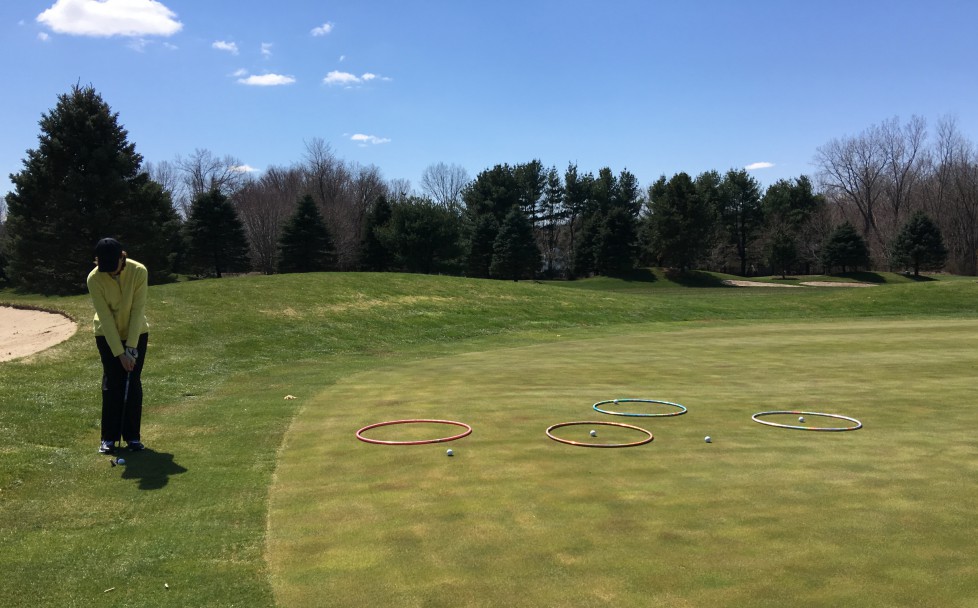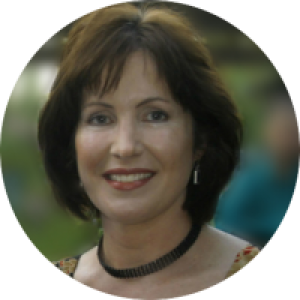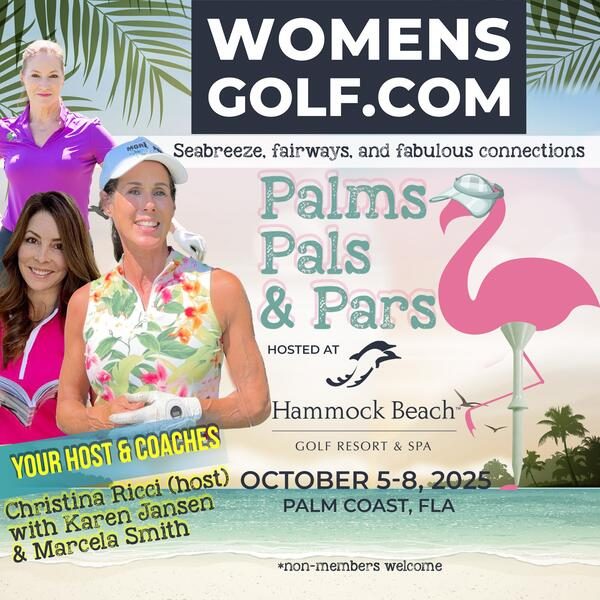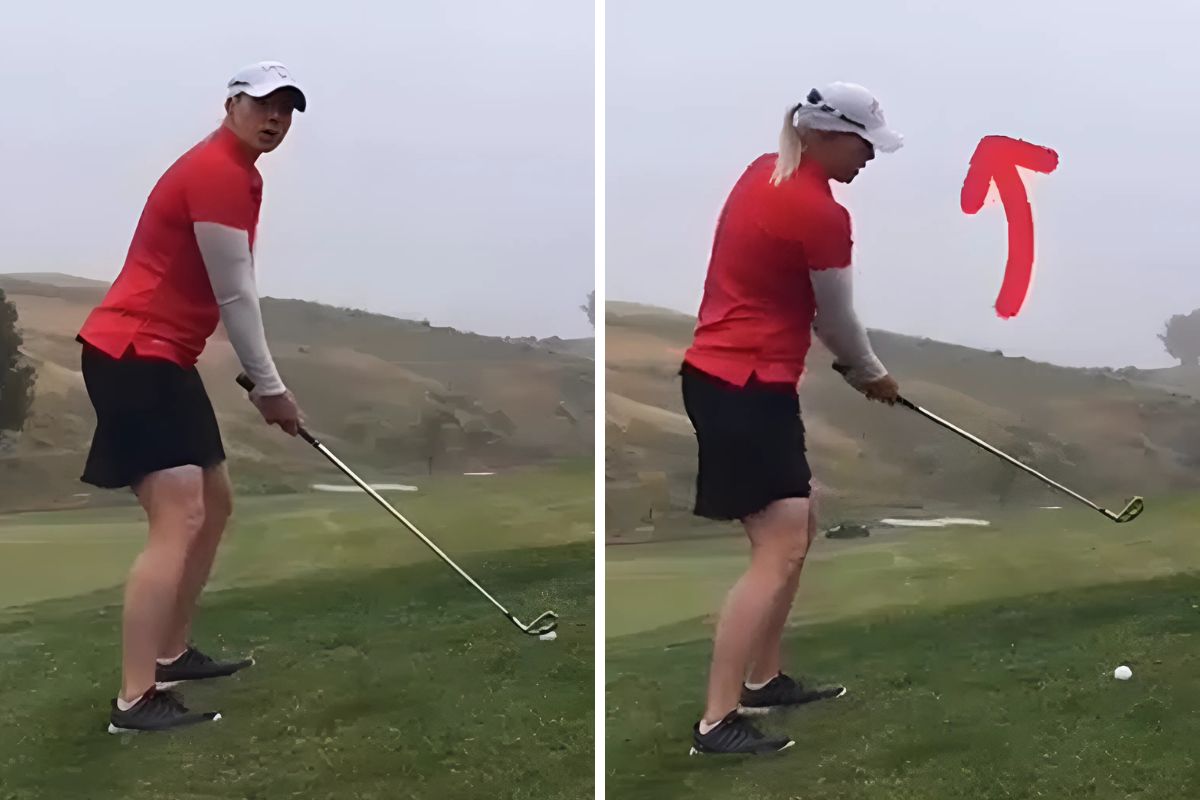In my last article, Conditions for Effective Practice, I encouraged you to set SMARTER goals that incorporate fun and variety into daily practice to best fuel motivation. When motivated, you can establish a clearly defined purpose for practice. This is essential because your purpose will determine how best to structure practice.
Essentially, there are three purposes for golf practice: Skills Development, Skills Maintenance, and Skills Transfer. Given their importance, let’s take a closer look at each one.
Skills Development

One purpose for practice is Skills Development. This involves learning the various golf skills needed to play successfully. For example, let’s assume you struggle to get your chips close enough to realistically get up-and-down. With the help of your local golf professional, you discover you need to keep more weight over your target foot (left foot for a right-handed player). Your coach shares with you the flamingo drill to support this objective (See below). However, having a greater understanding of what to practice is only the first step. The next consideration is how to practice. Early in skill development, it is best to practice in a “blocked structure.”
This means you do many repetitions with the same club, to the same target. You practice under ideal conditions (level lie, nice grass). If incorporating a drill or training aid such as the flamingo drill, you have a higher ratio of swings with the drill relative to swings without the drill.

The Flamingo Drill
The flamingo drill is a fun and simple exercise to promote weight favoring your target foot (the foot closest to the target) and minimize excess lower body motion when chipping.
- After you have addressed the ball, pull your non-target foot back onto its toes. Little if any weight should be on this foot.
- Chip from this position. Observe how it feels to have your weight over your target foot and your lower body quiet.
Skills Maintenance
As you gain a general sense of how to keep your weight over your target foot throughout your swing when chipping, your purpose shifts from Skill Development to Skill Maintenance.
At this stage of learning, you are less concerned with making a significant change in your swing. Your aim is simply to refresh or retain the skill. The structure of practice for Skill Maintenance is similar to Skill Development except there are fewer repetitions with the same club and if a drill or training aid is used, it is used only as a reminder of how the desired motion feels. With our chipping example, instead of hitting 30 balls to the same target using the flamingo drill 75% of the time, you would use the flamingo drill for the first few shots and then again only as needed.
Skills Transfer
Although Skill Development and Skill Maintenance practice are important for learning, they are not ideal practice conditions to transfer a golf skill learned on the practice green or tee to actual play on the golf course.
If you continue to structure your practice sessions in a blocked format (repeating the same shot, with the same club, to the same target), you may see improved performance on the driving range, but you will see limited progress on the golf course. Sound familiar?
Transfer Practice is needed to increase the likelihood that your improved performance in practice will transfer to the golf course. The key to this type of practice is simulating on course conditions.

Let’s return to our chipping example. Rather than hit several balls to the same hole, chip one ball to a specific target and then putt out. Following completion of this “hole,” choose a different length target. Change the lie of the chip…don’t always practice from perfect lies. If possible, chip from a variety of slopes (uphill, downhill, sidehill). The most important element of Transfer Practice is varying each shot.
So the next time you head to the practice green or tee, consider your purpose. Did you recently take a lesson and are trying to learn something new? Perhaps you have a sense of your desired swing change and are simply looking to maintain performance. Or, if you have progressed through the stages of learning, your objective may be to transfer your golf performance from the driving range to the golf course. By clearly defining your purpose, you will be better equipped to structure your practice accordingly to meet your goals.
Look for a future article highlighting various games for Transfer Practice around the green to add to your fun both in practice as well as actual play.

Nicole Damarjian is the Director of Instruction at Willow Brook Golf Course in South Windsor, Connecticut. She was ranked as a Golf Digest Top Teacher in Connecticut in Golf Digest in 2011-2014. She received her Ph.D. in sport psychology from the University of North Carolina at Greensboro. She has coauthored several research papers and book chapters on the psychology of sport and has published various magazine articles specifically related to the psychology of golf.
Nicole has been a Class A member of the LPGA since 1997 and currently chairs the LPGA’s Master’s Thesis Committee and is an instructor in the LPGA’s Teacher Education Program.

As a former collegiate golfer at Furman University and a four-time winner of the Southern New England Women’s Golf Association Championship, Nicole understands first-hand the unique challenges of playing golf. She has coached both professional and amateur golfers and enjoys empowering individuals to reach their true potential. Nicole is also a part-time professor at Eastern Connecticut State University where she teaches “Peak Performance for Life Through Sport” and “Health and Wellness.”
Contact Nicole Damarjian at Willow Brook Golf Course in South Windsor, CT. Phone 860-334-208.
Follow Nicole online at: www.nicolewillowbrookgolf.com







